“Island of Gems”
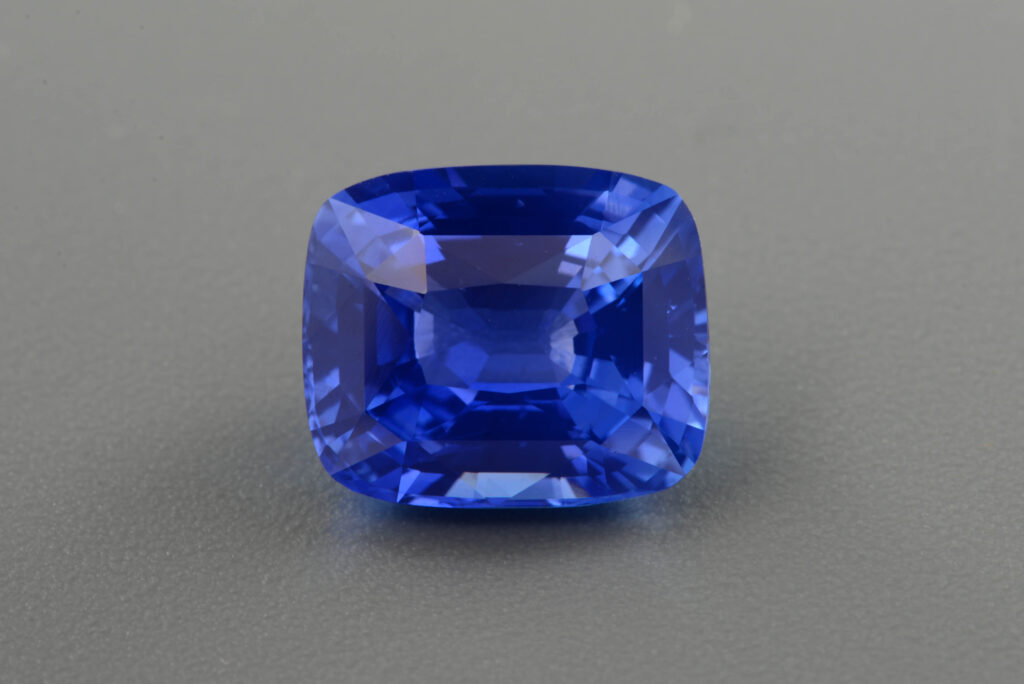
Exploring the Mines of Sri Lanka
“Ceylon has all the fine cinnamon of the Indies and the best sapphires.”
– Vasco de Gama
Mentions of gemstones are found throughout history, and Sri Lanka (also referred to historically as Ceylon, Sidhaleepa, Serendib and Taprobane) is central in these tales. The nation’s gem trade dates back to the 6th century B.C., if not further. King Solomon is said to have offered precious stones from Ceylon in his quest to win the heart of the Queen of Sheba. Local royalty and religious leaders wore jewelry encrusted with fine gems long before the trade expanded beyond the island itself, and Mukkuwars, a people devoted to mining gems in Sri Lanka, felt gems should be carried with them into the afterlife. Arab, Indian, Dutch, and Portuguese spice traders also expanded the reach of gems from this precious isle.
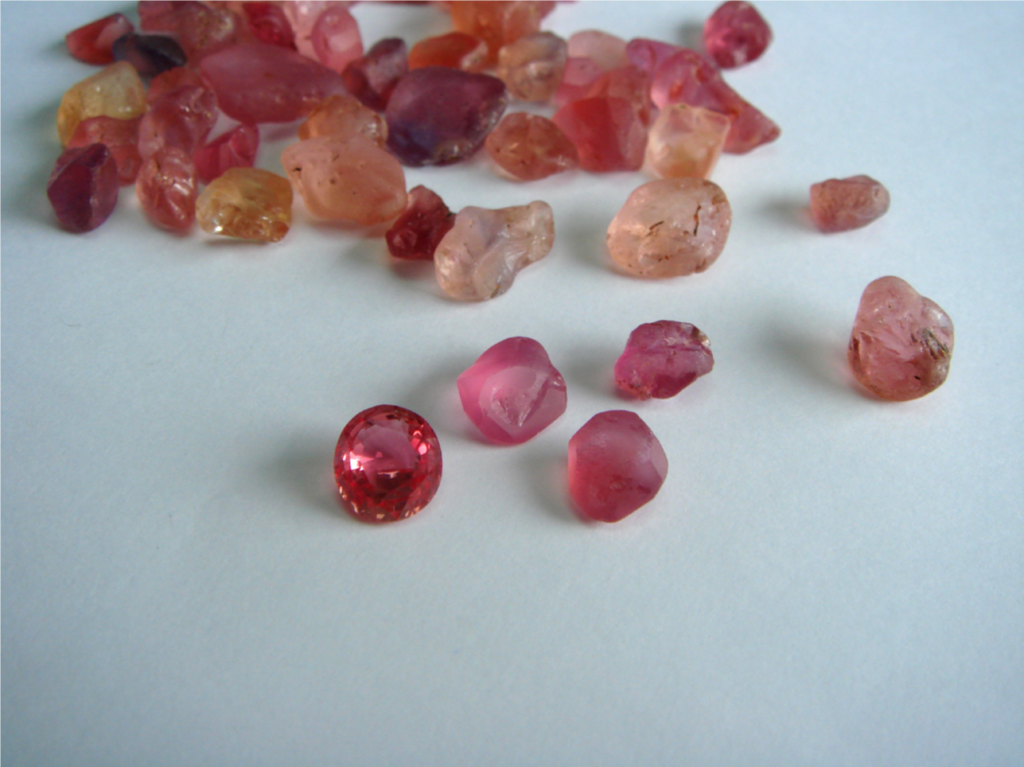
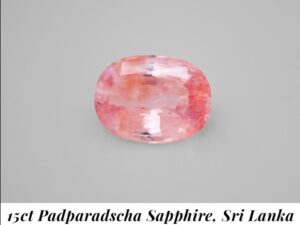
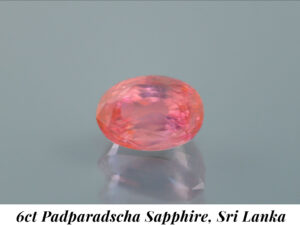
Sri Lanka is home to many varieties of gemstones, including alexandrite, chrysoberyl, garnet, moonstone, spinel, topaz, tourmaline and zircon, but perhaps the most sought after are the corundum gems, particularly padparadscha and Ceylon blue sapphires.
The name padparadscha is derived from the Sanskrit “padma raga”, which means lotus color. Though lotus flowers come in many hues, the rare and desirable pinkish-orange to orangy-pink color defines this gem variety. The range of acceptable padparadscha color is also associated with similar hues seen at sunrise and sunset.
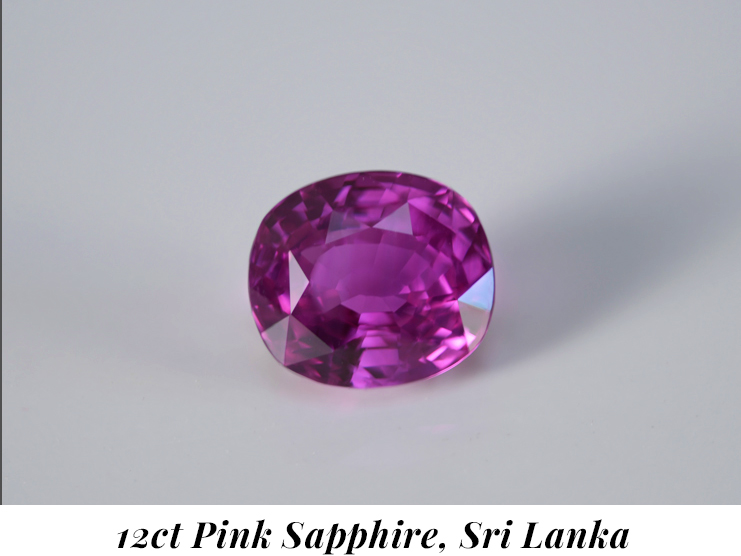
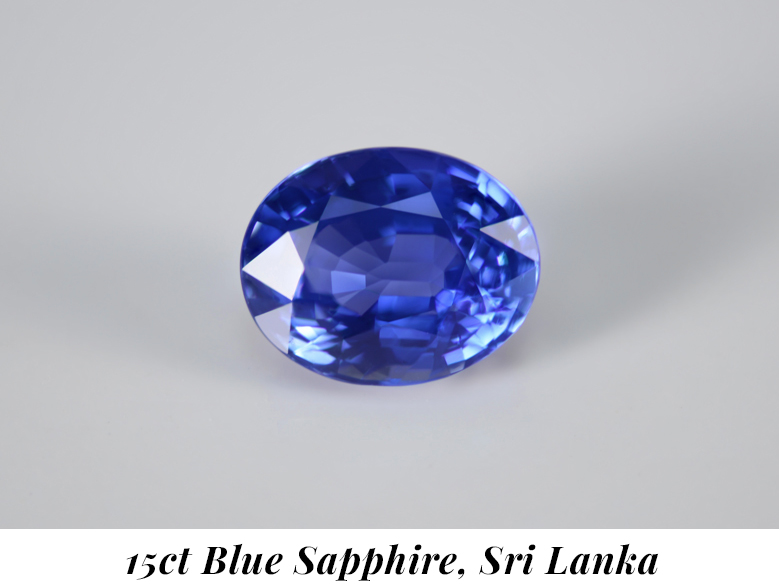
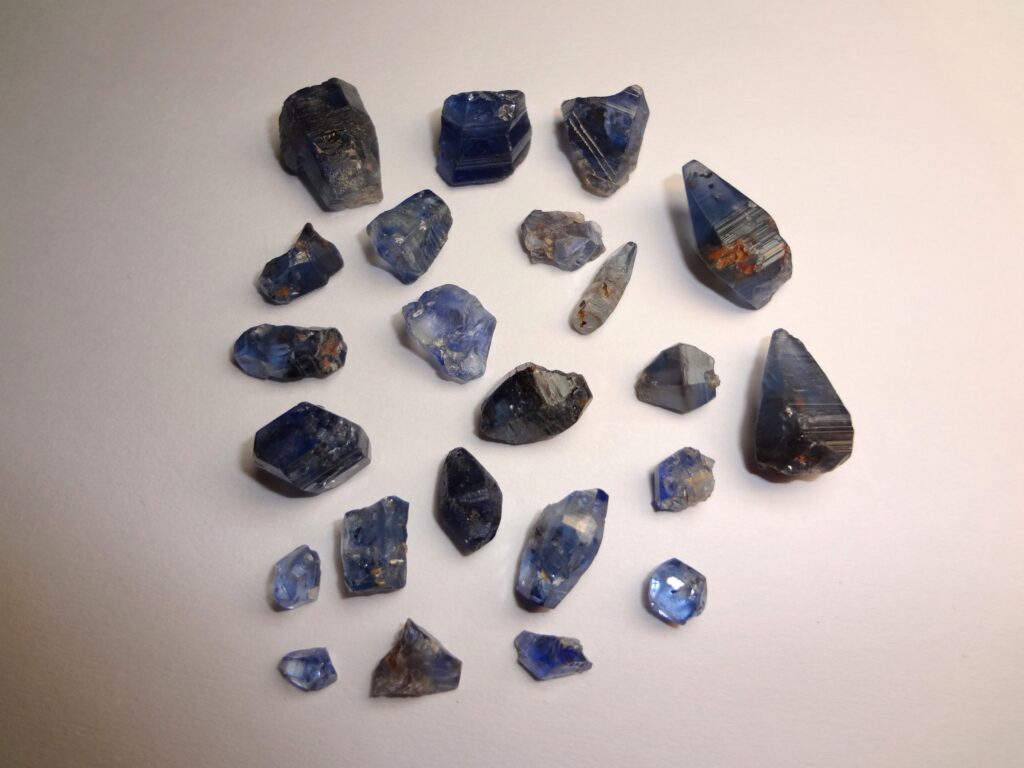
While Sri Lanka is typically known for its brighter cornflower blue sapphires, it also produces more intense blues that are often confused with those from Burma, and even Kashmir. Sri Lanka is also the most prolific producer of cat’s eye chrysoberyl and star sapphires in all hues.
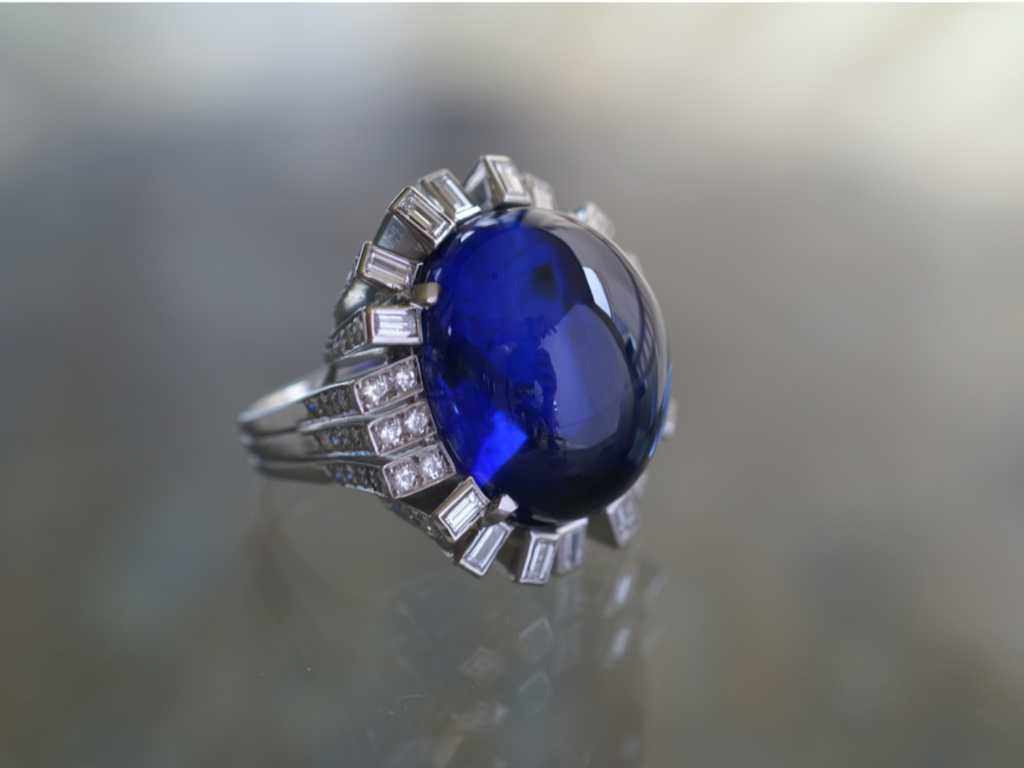
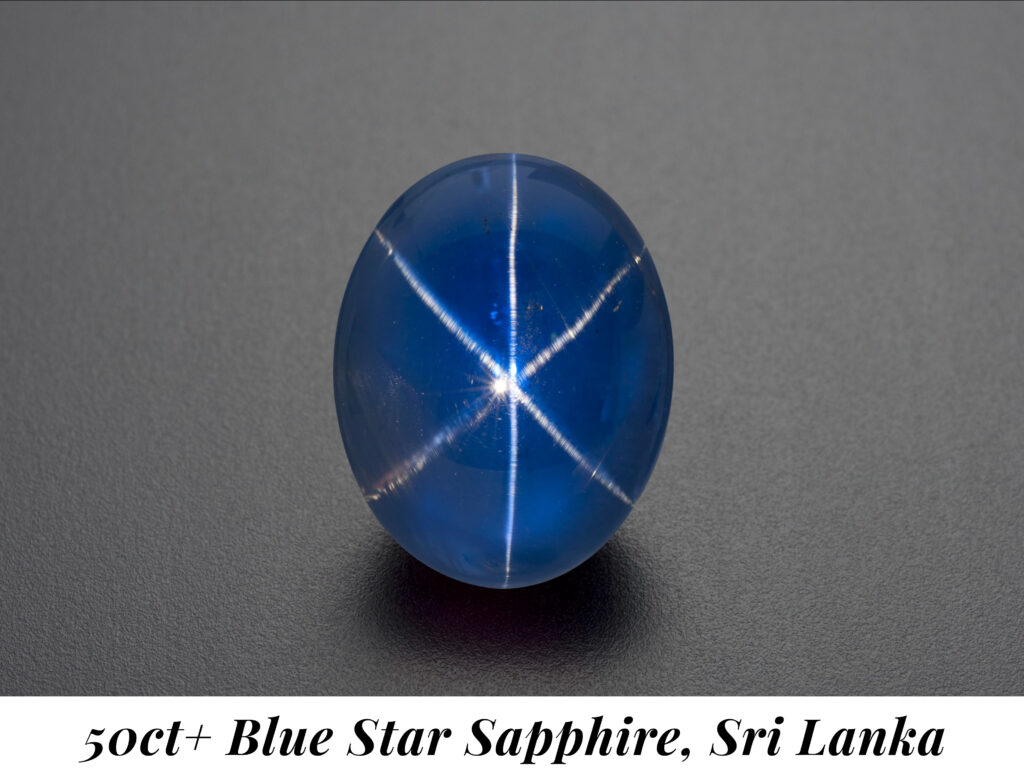
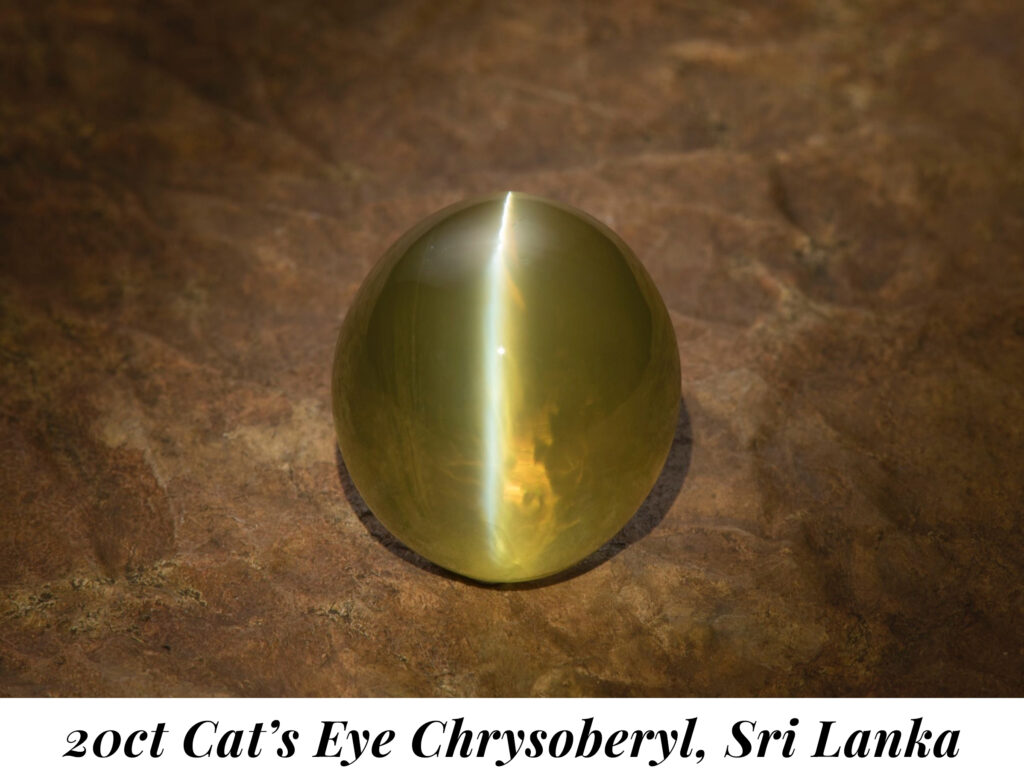
Gem mining has been an integral part of the Sri Lankan culture and economy for millennia, and there are many governmental procedures in place to protect both the residents and the land itself. The National Gem and Jewelry Authority (NGJA) oversees sustainability practices with the goal of maintaining a clean environment and stimulating the local economy. Once gemstone material is found and a mining license obtained, the land owner, financier, and mine workers are each entitled to a share of the profits.
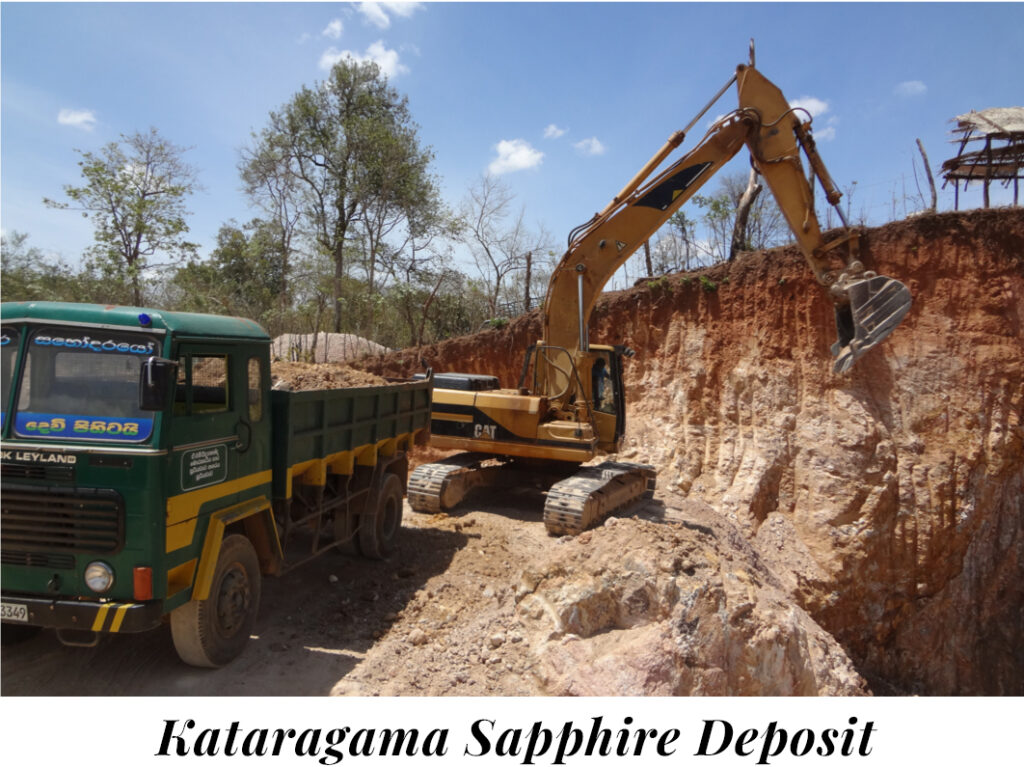
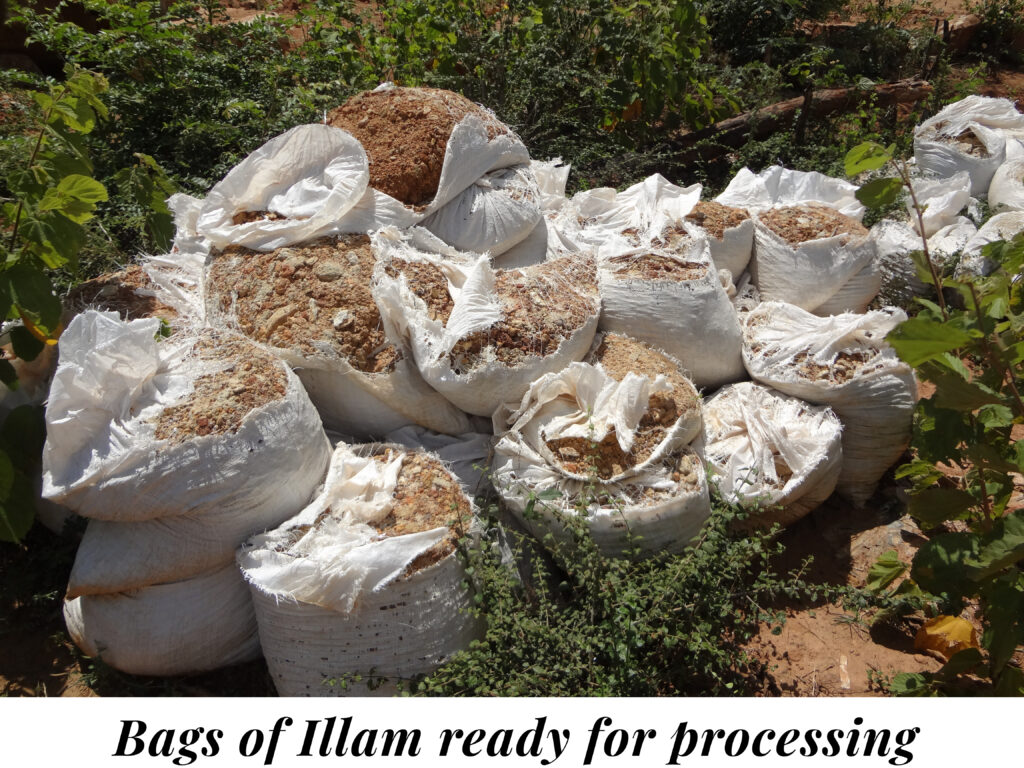
Sri Lanka’s Central Highland Complex and Eastern Vijayan Complex are the most important areas for gem production. Central Highland sapphires come from Ratnapura, Balangoda, Rakwana, Matale and Elahera. Other deposits in the Southern portion of the Eastern Complex are located at Kataragama and Okampitiya.
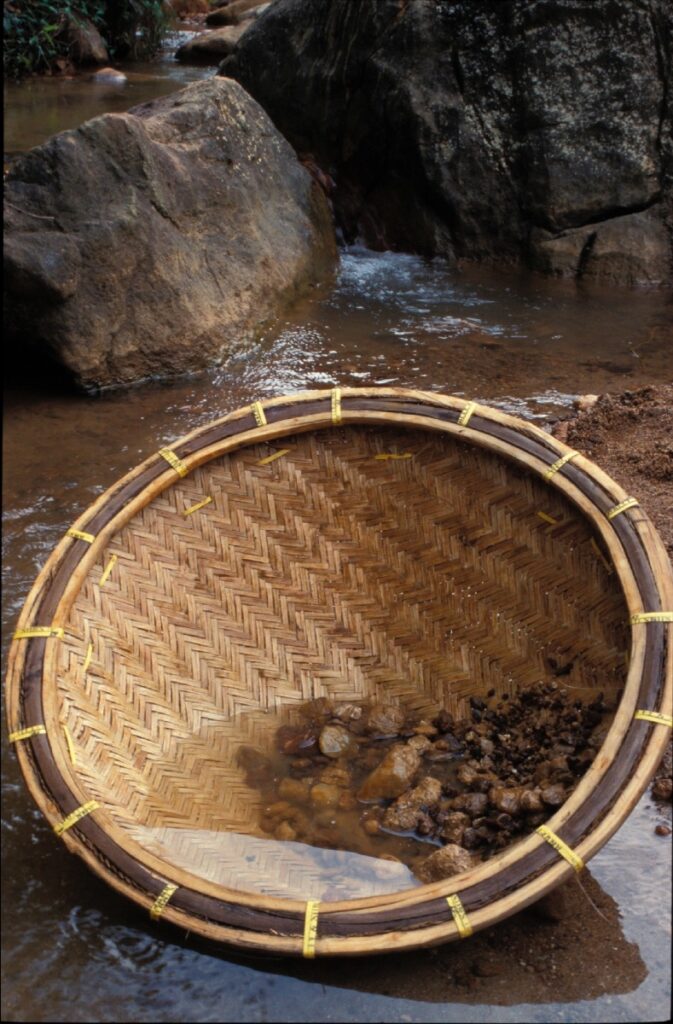
In Sri Lanka, gems are typically found in an alluvial layer of gem-bearing gravel referred to as “Illam”. However, primary as well as secondary eluvial deposits consisting of euhedral and subhedral crystals may also be found. Gem-bearing material is sorted by hand washing the illam in circular thatch baskets or using a sluice and jig gravity separation system. Both these methods are employed to separate pebbles and dirt from the denser gem rough that sinks to the bottom of the basket or jig.
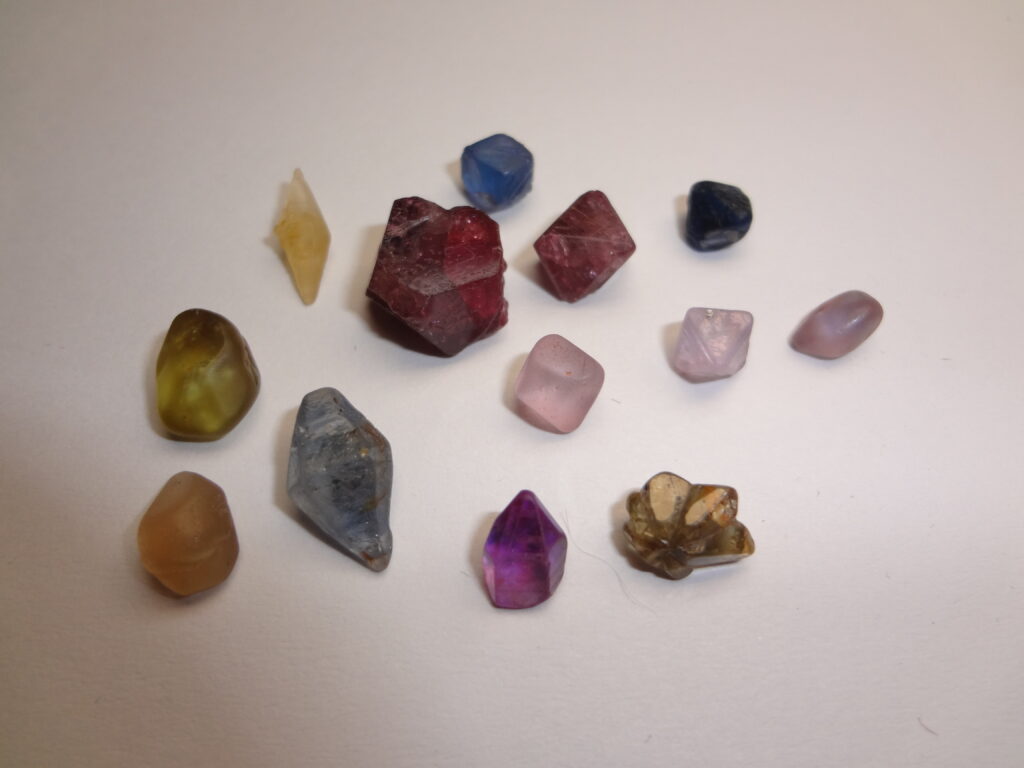
Sapphire, spinel, chrysoberyl, taaffeite and amythest
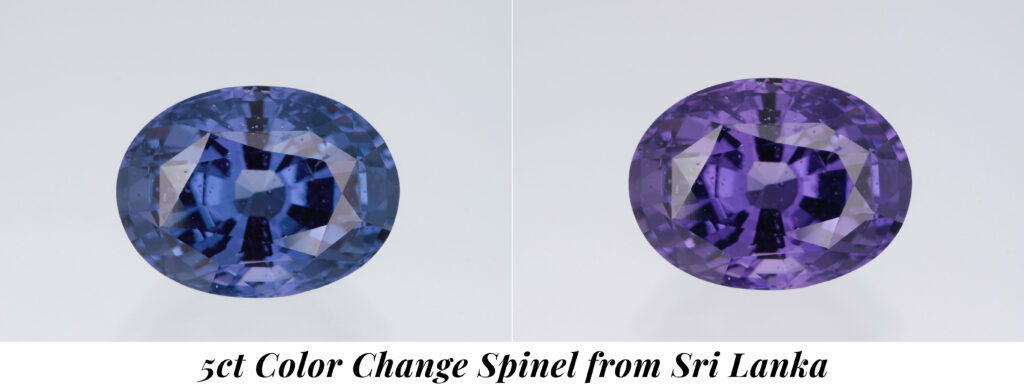
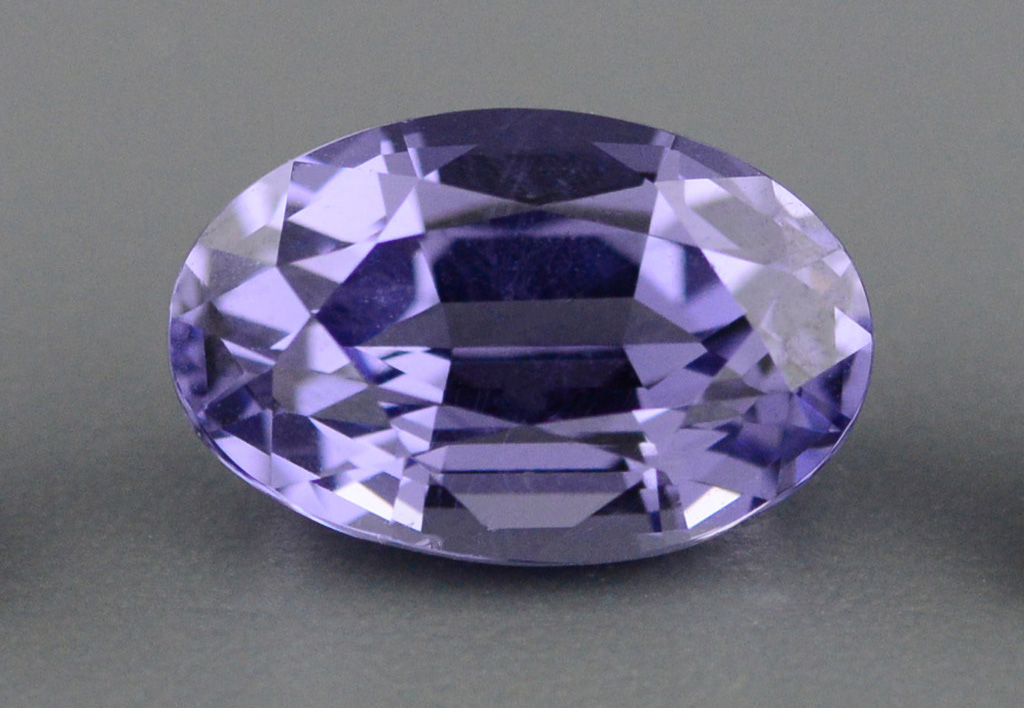
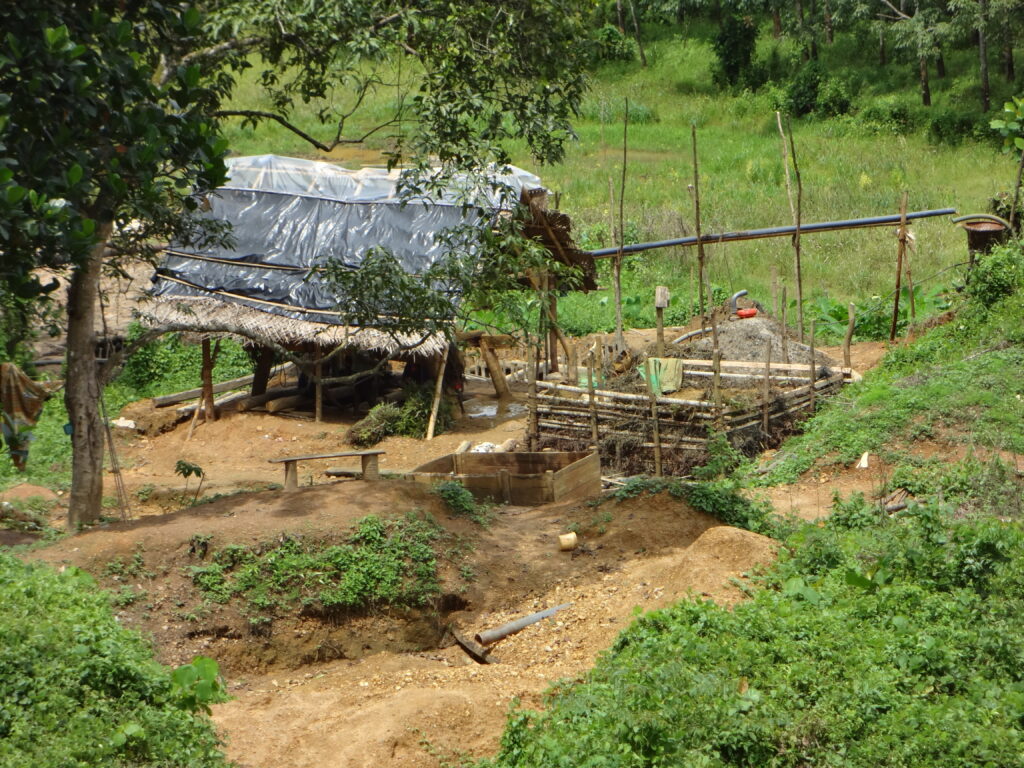
The mine shaft on the left is covered by a thatch roof
The gem-bearing gravel “illam” layer is typically located at a depth of 3-30 meters
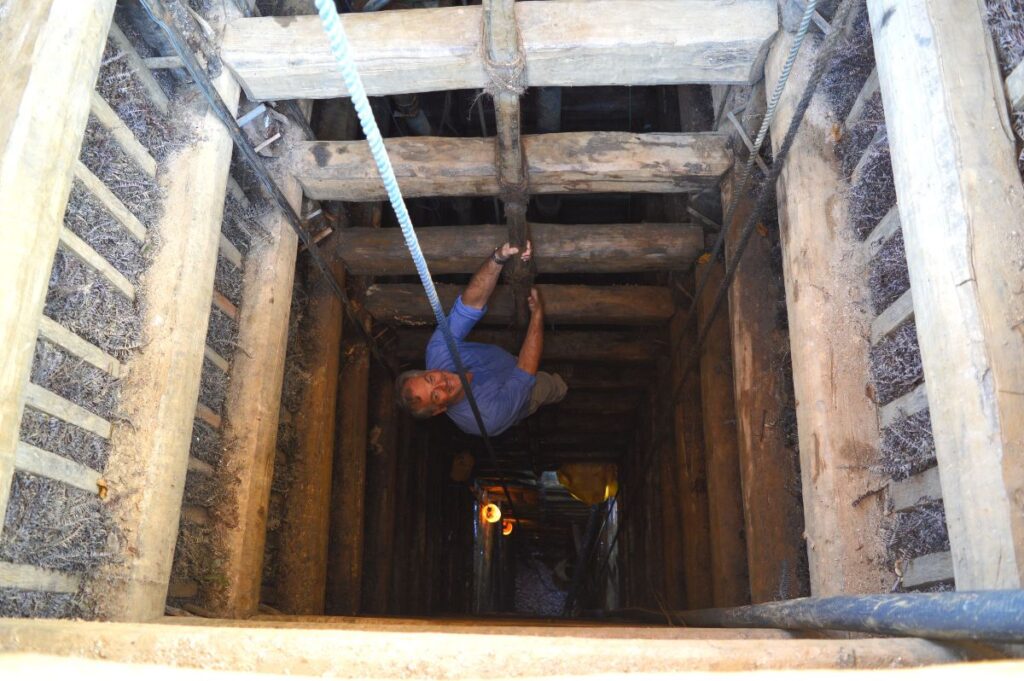
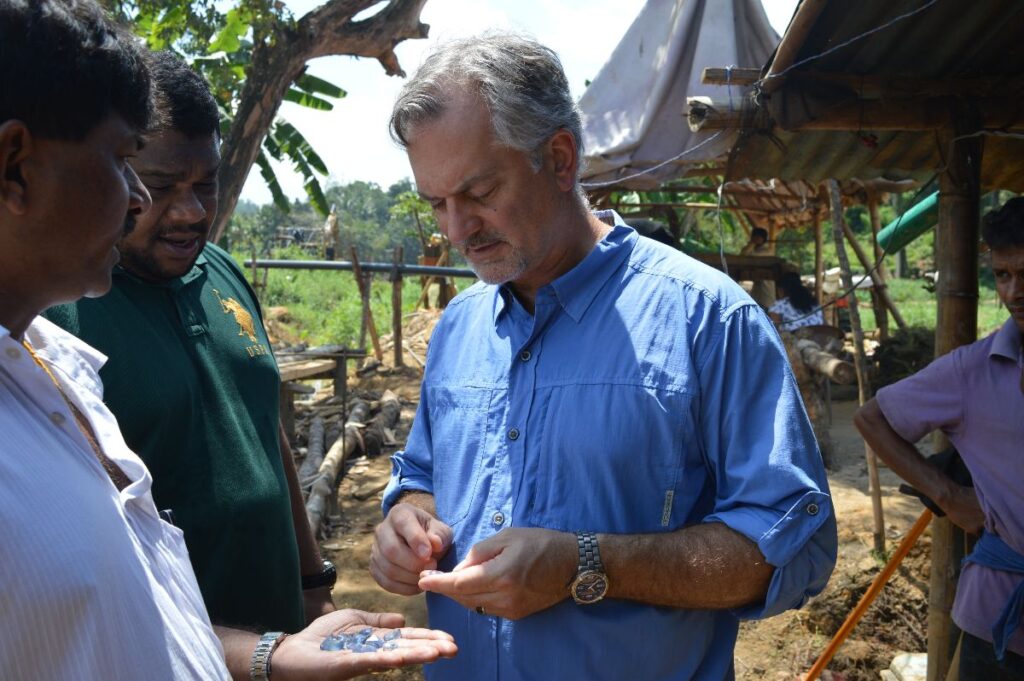
The majority of mines in Sri Lanka are pits reinforced by wood scaffolding and leaves, and manned by a small crew. Mechanized mining is only permitted when the gem deposits are too deep or sparse for pit mining, or when the concentration of gem material is so high that illegal mining might occur. There are more than 8,000 licensed mines across Sri Lanka, employing over 75,000 miners (pers. comm. Dr. Gamini Zoysa).Unlike many other mining locales, there are very few abandoned mines in Sri Lanka. Once a mine is no longer active, the NGJA requires that all pits and mine shafts be filled to prevent damage to the landscape, mosquito breeding, and other hazards caused by the unattended pits.
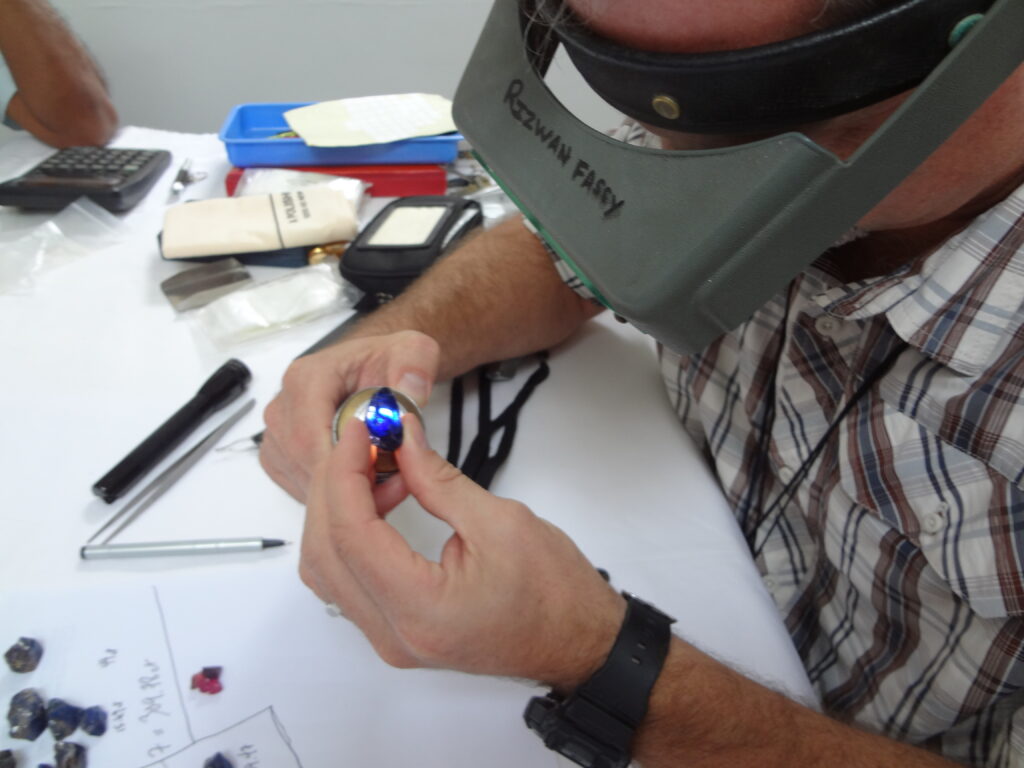
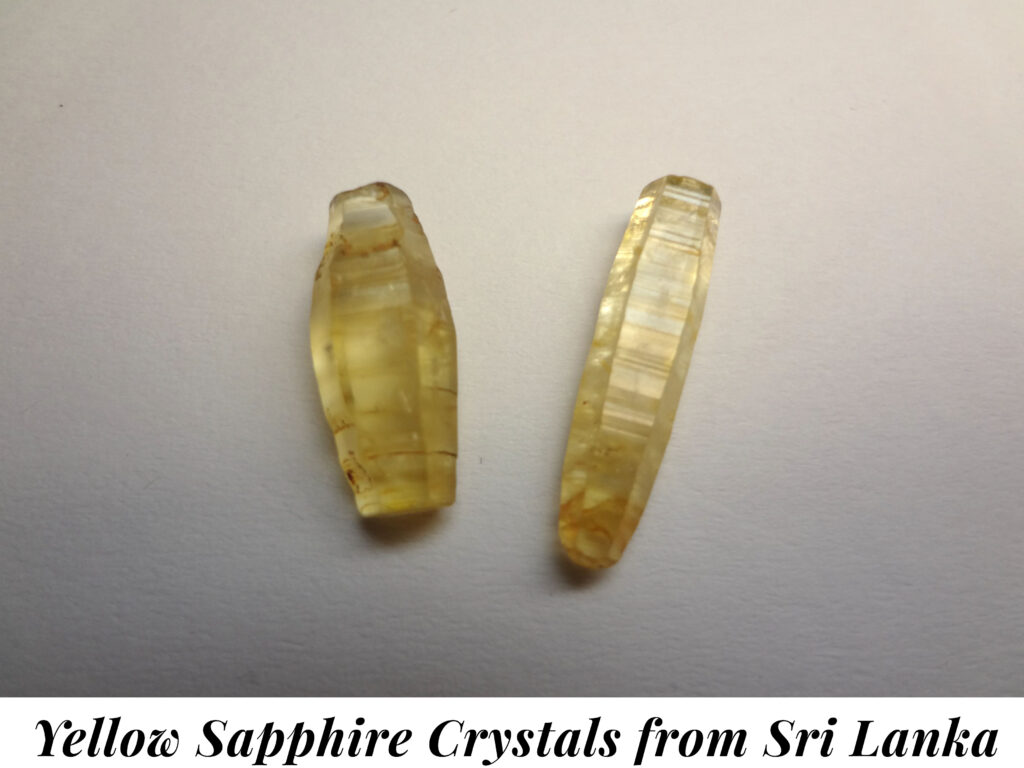
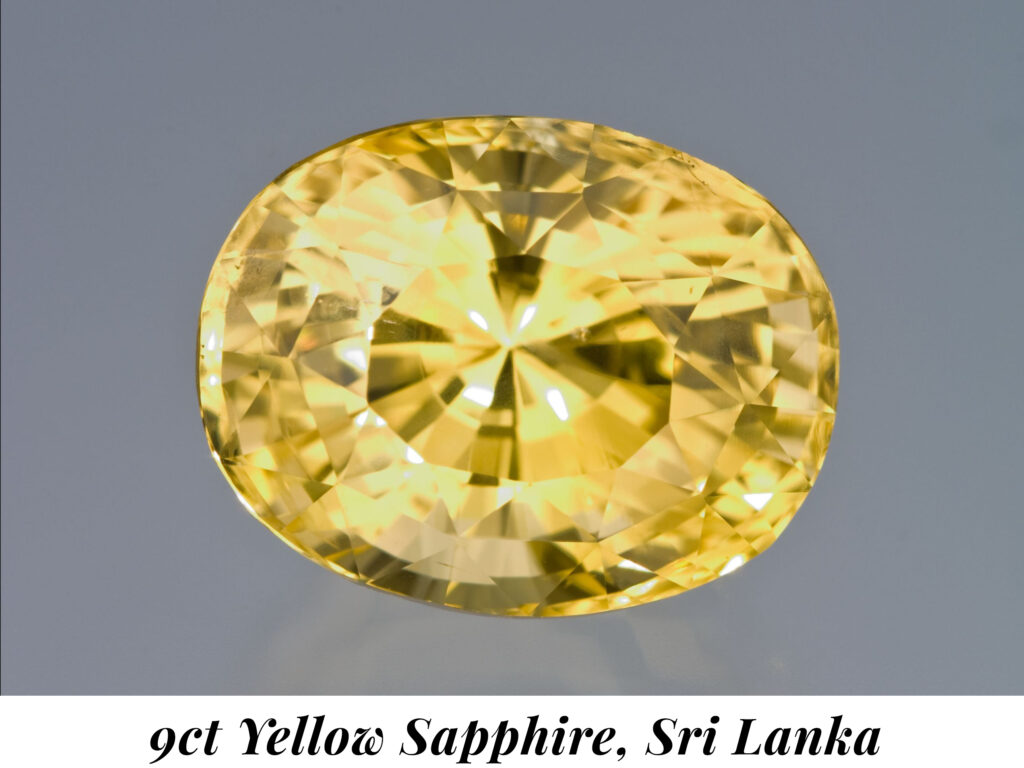
For generations, gems found in Sri Lanka have been cut and polished before being exported. Traditional methods of faceting that were less efficient and precise are gradually being replaced by new technology, preserving Sri Lanka’s respected reputation as a source of fine gemstones. More recently, Sri Lanka has allowed the importation of gem rough from other source countries, adding significantly to the growth of their cutting and polishing industry. They have also mastered the art of heat treatment to improve color and clarity, thereby adding additional value to gems that would have otherwise been less saleable.
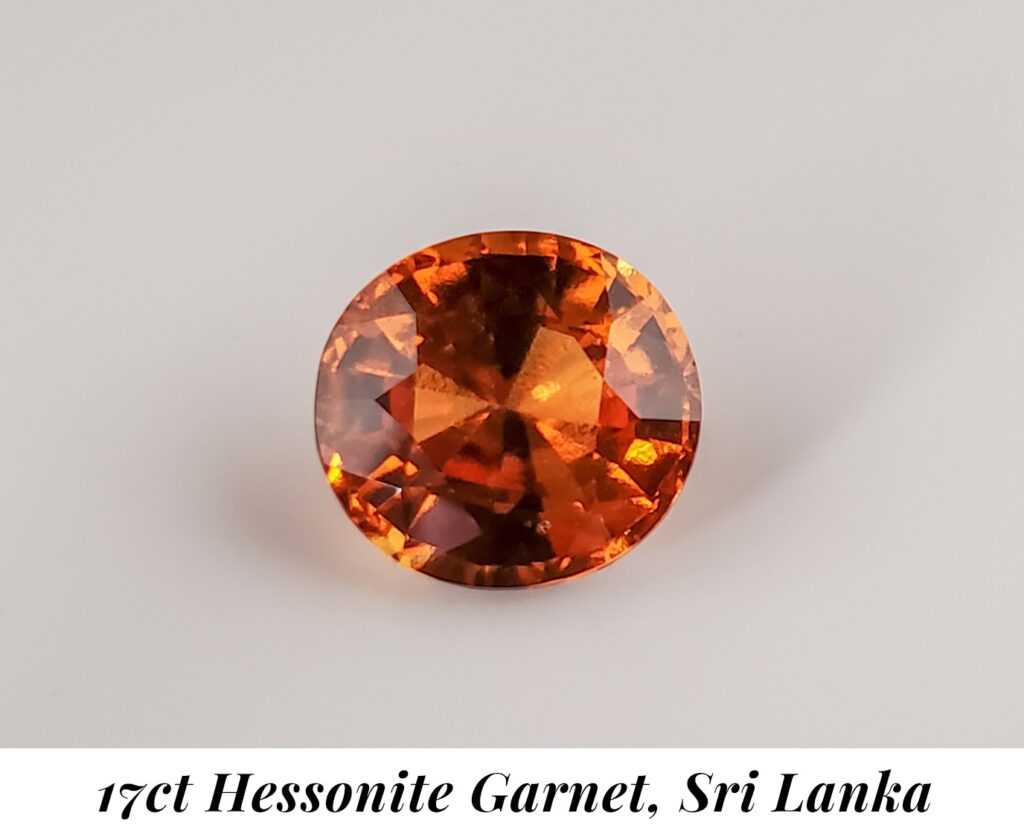
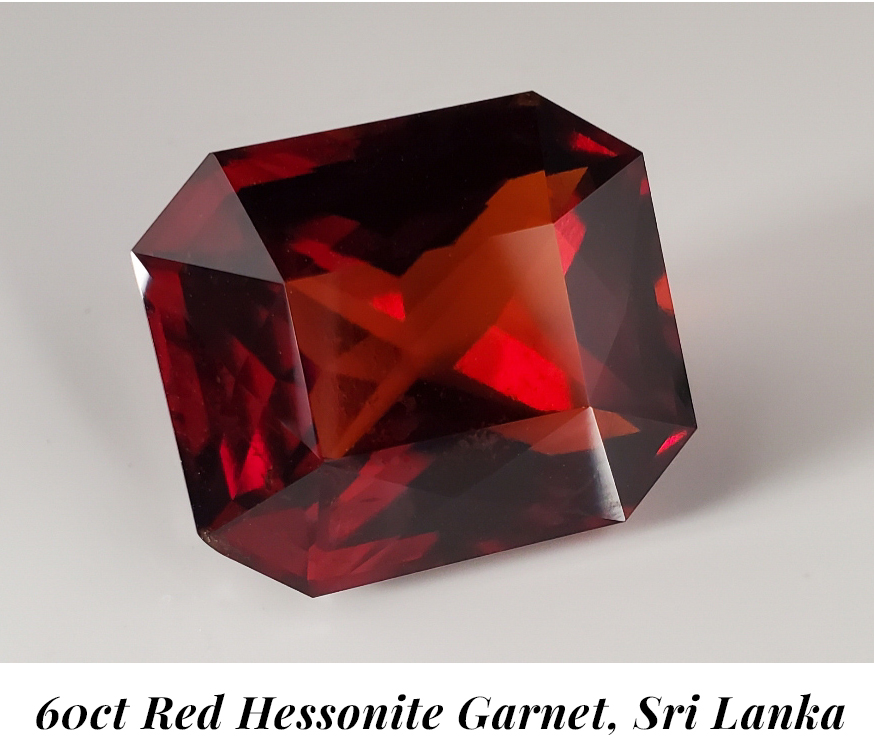
Sri Lanka is an important supplier of spices as well as gemstones, cinnamon being top among them. Due to their typically brownish-orange color, hessonite garnets are affectionately referred to as Cinnamon Stones. Recently, more red colored hessonites have been discovered at Kamburupitiya in the southern district of Matara.
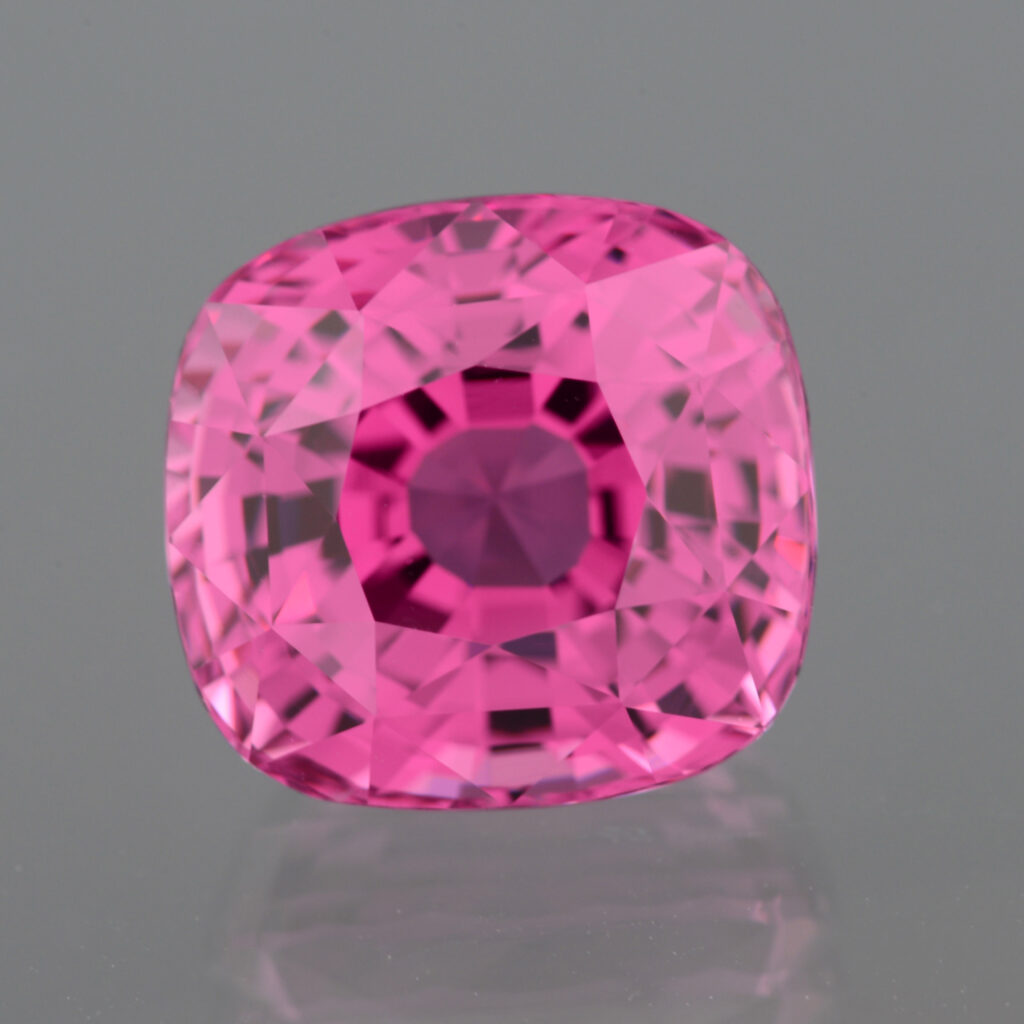
“I want you to understand that the Island of Ceylon is for its size, the finest island in the world, and from its streams comes rubies, sapphires, topazes, amethyst and garnet.”
– Marco Polo